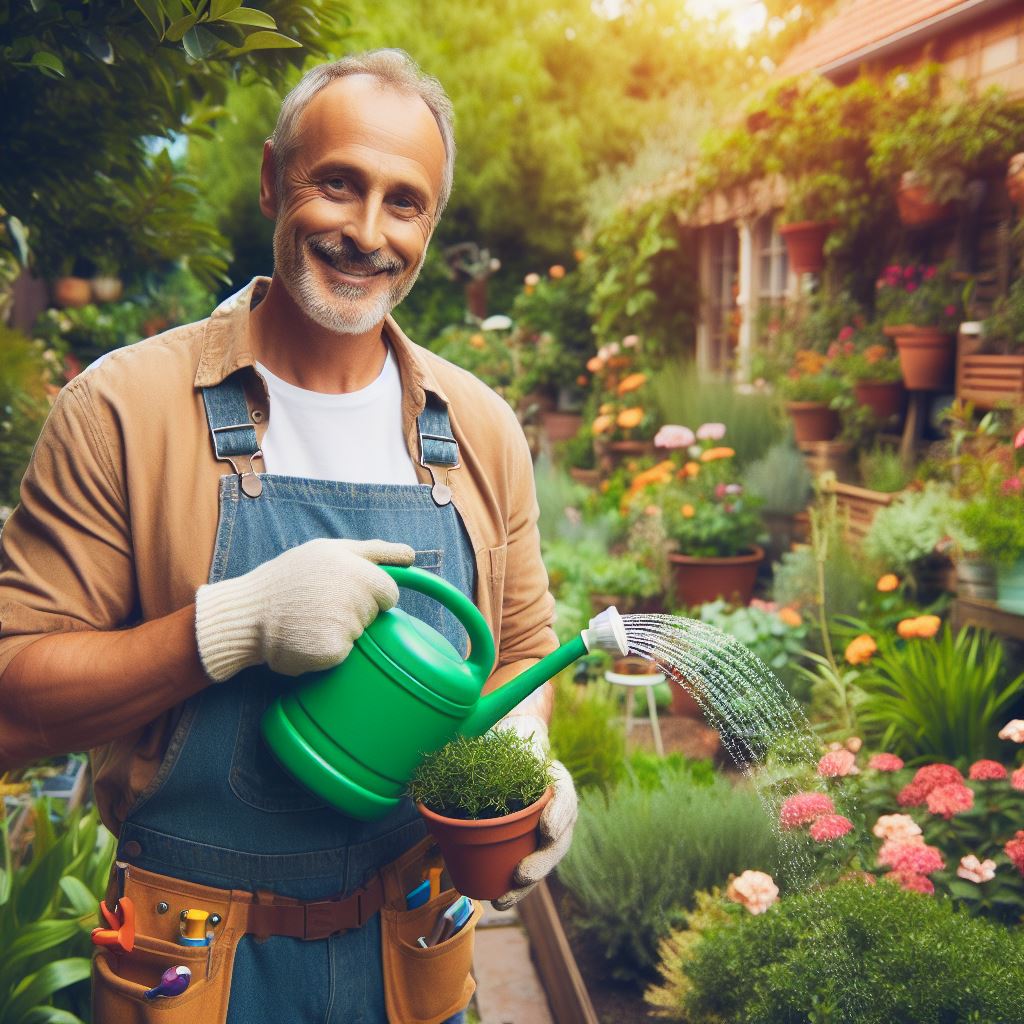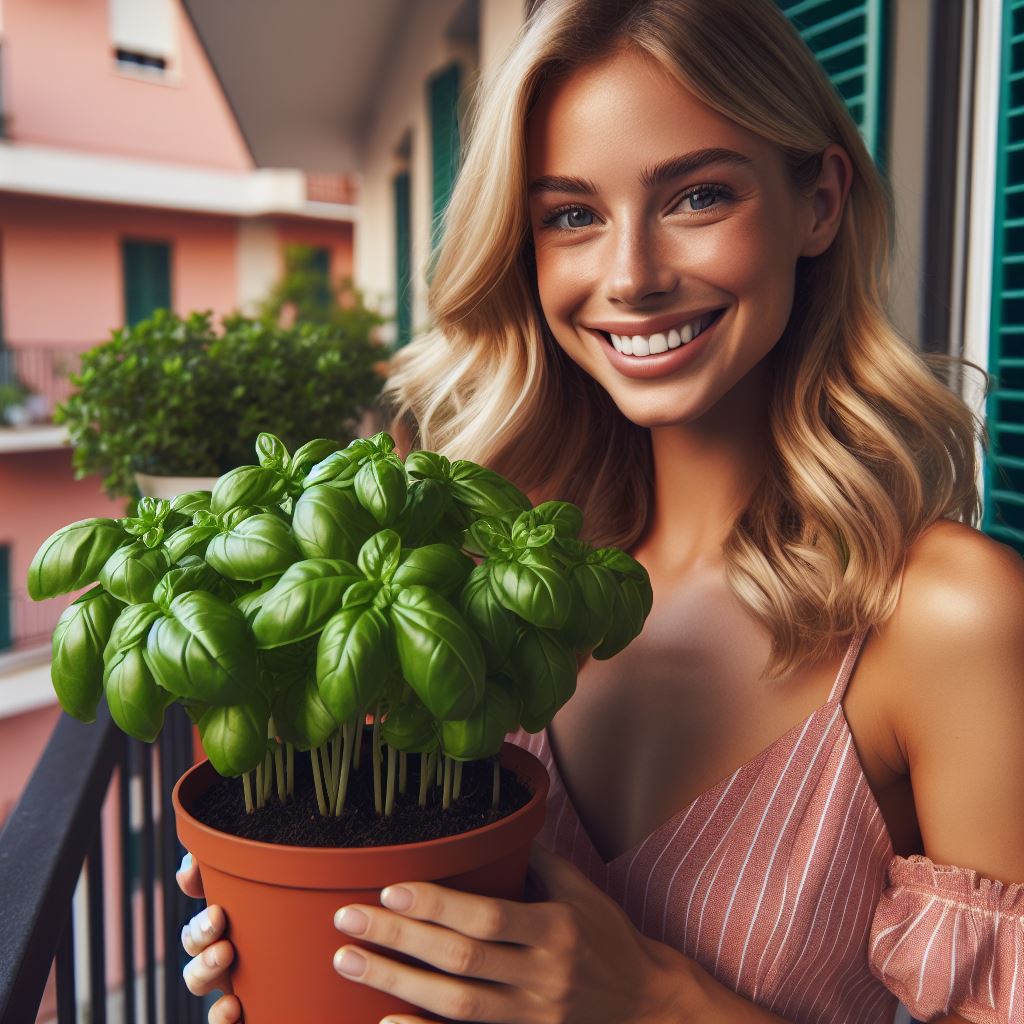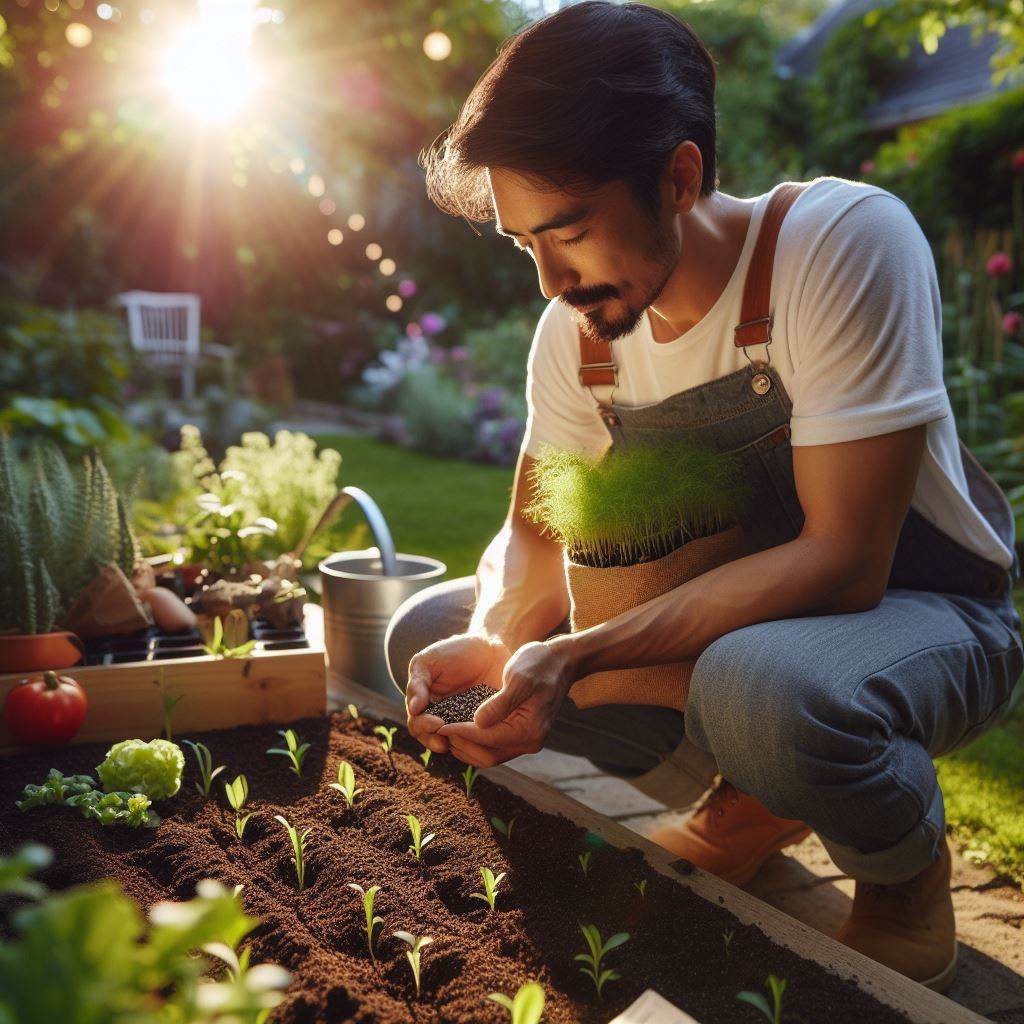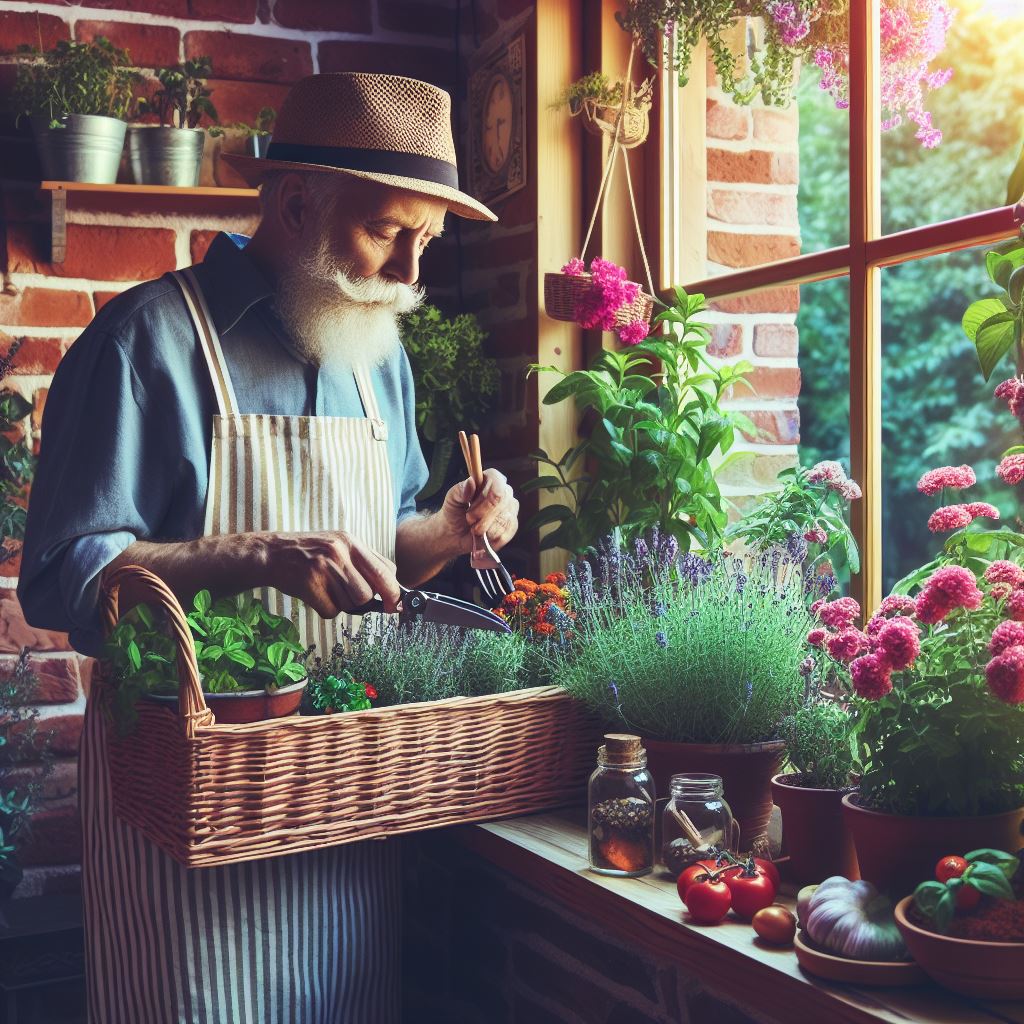Introduction
Definition of water-wise gardening
Water is a precious resource, especially in urban areas where demand is high and supply is limited.
To ensure sustainability and conserve water, water-wise gardening is essential.
So, what exactly is water-wise gardening?
It refers to using techniques and practices that minimize water usage while still maintaining a healthy and thriving garden.
The purpose of this blog post is to provide readers with a comprehensive understanding of the essentials of water-wise urban gardening.
Importance of water-wise gardening in urban areas
Efficiency is key in water-wise gardening.
By making strategic choices in plant selection, grouping plants with similar water needs, and using proper irrigation methods, water usage can be drastically reduced.
Mulching is another important practice as it helps retain soil moisture, prevent weed growth, and regulate soil temperature.
Rainwater harvesting and greywater recycling are also effective ways to maximize water usage.
Apart from being environmentally responsible, water-wise gardening offers numerous benefits.
It saves money on water bills, requires less maintenance, and promotes conservation of local water resources.
Moreover, it contributes to a healthier ecosystem by reducing pollution caused by excessive water runoff.
In the following sections, we will delve into specific techniques, such as drip irrigation and xeriscaping, to help you create a water-wise urban garden.
We will also explore plant selection, proper watering schedules, and essential gardening tools.
Stay tuned for an informative and practical guide on water-wise urban gardening!
Transform Your Agribusiness
Unlock your farm's potential with expert advice tailored to your needs. Get actionable steps that drive real results.
Get StartedBenefits of Water-Wise Urban Gardening
A water-wise urban garden refers to a sustainable approach to gardening that focuses on conserving water resources.
By utilizing water-efficient techniques, urban gardeners can enjoy numerous benefits that are not only economical but also environmentally friendly.
Conservation of water resources
Water is a precious resource, and water-wise urban gardening helps in its conservation.
By implementing methods such as drip irrigation and mulching, gardeners can minimize water wastage and ensure efficient water usage.
Through drip irrigation, water is directly delivered to the roots of plants, reducing evaporation and ensuring that every drop counts.
Mulching helps retain moisture in the soil, reducing the need for frequent watering.
By conserving water resources, urban gardeners contribute to the overall sustainability of their communities and help combat water scarcity issues.
Reduction of water bills
Water-wise gardening techniques can significantly reduce water bills for urban gardeners.
By conserving water, they lower their water consumption, leading to substantial savings in their monthly utility bills.
Conventional irrigation methods, such as sprinklers, often result in excessive water usage and inflated bills.
In contrast, water-efficient techniques focus on delivering water directly to the plants’ roots, avoiding unnecessary wastage.
By adopting water-wise practices, urban gardeners can make a positive impact on their finances while still enjoying the beauty and benefits of their gardens.
Minimization of environmental impact
Water-wise urban gardening minimizes the environmental impact associated with traditional gardening practices.
By reducing water consumption, gardeners contribute to water conservation, which is vital for the health of aquatic ecosystems.
Moreover, by minimizing the use of chemical fertilizers and pesticides, urban gardeners prevent these harmful substances from entering water bodies through runoff, thus preserving water quality.
Water-wise gardening also promotes biodiversity by attracting native plants and beneficial insects, creating a sustainable and ecologically balanced urban environment.
Preservation of soil health
Water-wise gardening techniques help preserve soil health and fertility, ensuring long-term garden productivity.
By avoiding excessive watering, soil compaction, and erosion, gardeners maintain a healthy soil structure.
Overwatering can lead to waterlogging, which deprives plants of oxygen and damages their roots.
By adopting water-wise practices, urban gardeners prevent such issues, promoting strong root development and overall plant health.
Additionally, mulching helps to retain moisture in the soil, preventing it from drying out and becoming compacted.
This in turn enhances nutrient availability and microbial activity, fostering a thriving soil ecosystem.
Overall, water-wise urban gardening is not only beneficial for the gardeners themselves but also for the environment and the community as a whole.
By conserving water resources, reducing water bills, minimizing environmental impact, and preserving soil health, urban gardeners contribute to a more sustainable and resilient urban landscape.
Showcase Your Farming Business
Publish your professional farming services profile on our blog for a one-time fee of $200 and reach a dedicated audience of farmers and agribusiness owners.
Publish Your ProfileRead: Tiny Orchard: Fruit Trees in Pots
Choosing the Right Plants
Selection of native and drought-resistant plants
One of the most crucial aspects of water-wise urban gardening is choosing the right plants.
By selecting native and drought-resistant plants, you can effectively reduce water consumption and create a sustainable and thriving garden.
Native plants are an excellent choice for water-wise gardening because they are adapted to the local climate and soil conditions.
These plants have evolved over time to withstand the challenges of the region, including periods of drought.
By choosing native plants, you ensure that they can thrive without excessive watering or maintenance.
In addition to native plants, it is also essential to consider drought-resistant varieties.
These types of plants have features that allow them to survive with minimal water.
Common characteristics of drought-resistant plants include deep root systems, the ability to store water, and small, thick leaves that reduce moisture loss through transpiration.
Understanding local climate conditions
When selecting native and drought-resistant plants, it is important to assess your local climate conditions.
Different regions have varying levels of rainfall and temperature fluctuations, which impact plant growth and water requirements.
By understanding your local climate patterns, you can select plants that are well-suited to thrive in your specific environment.
Evaluating plant water requirements
To evaluate a plant’s water requirements, consider factors such as its water usage, sunlight needs, and soil preferences.
Some plants naturally require less water, while others have higher demands.
By carefully assessing the water needs of each plant, you can create a garden that efficiently utilizes water resources.
To assist you in choosing the right plants for your water-wise garden, here is a list of popular native and drought-resistant plant species categorized by their water requirements:
Low Water Requirement Plants
- Lavender (Lavandula spp.)
- California Poppy (Eschscholzia californica)
- Red Yucca (Hesperaloe parviflora)
- Agave (Agave spp.)
- Sage (Salvia spp.)
Moderate Water Requirement Plants
- California Lilac (Ceanothus spp.)
- Penstemon (Penstemon spp.)
- Toyon (Heteromeles arbutifolia)
- Manzanita (Arctostaphylos spp.)
- Phlox (Phlox spp.)
High Water Requirement Plants
- Rose (Rosa spp.)
- Hydrangea (Hydrangea spp.)
- Lily (Lilium spp.)
- Hosta (Hosta spp.)
- Ferns (Polypodiopsida spp.)
By carefully selecting native and drought-resistant plants that match your local climate conditions and evaluating their water requirements, you can create a stunning water-wise urban garden.
Remember to plant strategically, considering the shade, sunlight, and water availability of your garden space.
With the right plants and proper planning, you can conserve water, reduce maintenance, and enjoy a beautiful and sustainable garden.
Read: Indoor Edibles: Grow Food Inside
Efficient Irrigation Techniques
A successful water-wise urban garden not only depends on choosing the right plants and creating good soil conditions but also on implementing efficient irrigation techniques.
By using water wisely, you can conserve this valuable resource and ensure the longevity of your garden. Here are some essential irrigation methods:
Drip Irrigation Systems
Drip irrigation is a highly efficient method of watering your plants.
It involves applying water directly to the base of each plant through a network of tubes or hoses with small outlets called emitters.
This targeted approach reduces water waste as it delivers water exactly where it is needed.
With drip irrigation systems, you can control the flow rate and duration, ensuring that plants receive sufficient water without excess runoff.
It also minimizes weed growth since water is focused on plant roots rather than the entire garden bed.
Mulching to Reduce Evaporation
Mulching is an effective technique to retain soil moisture and reduce evaporation.
By applying a layer of organic materials such as wood chips, straw, or compost on the soil surface around your plants, you can create a protective barrier.
This barrier prevents direct sunlight exposure, reducing evaporation rates and keeping the soil cooler.
It also helps inhibit weed growth, thus conserving moisture for your plants.
Mulching is particularly beneficial in hot and arid climates where water loss through evaporation is a significant concern.
Watering at Appropriate Times of Day
Choosing the right time to water your garden is crucial in preventing water loss due to evaporation.
It is recommended to water during the early morning or late evening when temperatures are cooler and there is less wind.
By avoiding watering during the hottest period of the day, you can reduce evaporation rates and ensure your plants receive the maximum benefit from the water.
Additionally, watering in the evening allows plants to absorb moisture overnight, promoting their growth and health.
Using Rainwater Harvesting Methods
Rainwater harvesting is an environmentally-friendly and cost-effective way to irrigate your urban garden.
By collecting rainwater from rooftops or other surfaces and storing it in barrels or tanks, you can utilize this natural resource for watering your plants.
Using rainwater reduces your reliance on municipal water supplies and minimizes water treatment costs.
It is important to position rain barrels or tanks strategically to capture as much rainwater as possible.
Showcase Your Farming Business
Publish your professional farming services profile on our blog for a one-time fee of $200 and reach a dedicated audience of farmers and agribusiness owners.
Publish Your ProfileYou can also consider installing a filtration system to ensure the stored water remains clean.
Implementing efficient irrigation techniques in your water-wise urban garden is essential for minimizing water consumption and promoting healthy plant growth.
Drip irrigation systems, mulching, watering at appropriate times, and rainwater harvesting methods are all valuable tools in achieving a sustainable and thriving garden.
By making conscious choices regarding water usage, you not only contribute to water conservation but also create a beautiful and vibrant urban oasis.
Read: Patio Farming: Fresh Food, Small Area
Soil Preparation and Maintenance
Amending soil with organic matter to improve water retention
- Choose organic matter such as compost, leaf mold, or well-rotted manure to amend your soil.
- Incorporate the organic matter into your soil using a garden fork or tiller.
- Aim for a ratio of 1 part organic matter to 3 parts soil for optimal water retention.
- Organic matter helps improve soil structure, allowing it to hold onto moisture for longer periods.
- This amendment also promotes the growth of beneficial soil organisms that aid in water absorption.
Implementing proper drainage techniques
- Assess your garden’s natural drainage patterns to identify any problem areas.
- Avoid low-lying spots where water tends to accumulate.
- Install French drains or gravel-filled trenches in areas of poor drainage.
- These drainage systems will help redirect excess water away from your plants’ root zone.
- Raised beds can also be a practical solution for areas with heavy clay or poor drainage.
- By elevating your planting area, you create a well-drained environment for your plants.
Monitoring and adjusting soil moisture levels
- Regularly check the moisture level of your soil by inserting your finger or a moisture meter.
- Adjust watering frequency and duration based on the moisture readings.
- Water your plants deeply but infrequently to encourage deep root growth and water conservation.
- Mulch the soil surface with organic materials like straw or wood chips to reduce evaporation.
- Mulching also helps regulate soil temperature and prevents weed growth, conserving soil moisture.
- Consider using moisture-holding additives like soil polymers to retain water in the root zone.
- These additives can be mixed with soil or added to watering cans to enhance water holding capacity.
In essence, soil preparation and maintenance are vital aspects of water-wise urban gardening.
By amending the soil with organic matter, implementing proper drainage techniques, and monitoring soil moisture levels, you can optimize water retention and utilization in your garden.
Remember, healthy soil is the foundation for a flourishing and water-efficient urban garden.
Read: Vertical Gardens: Maximize Your Space

Water-Saving Strategies
Achieving a water-wise urban garden requires implementing effective water-saving strategies.
By following these simple yet practical tips, you can conserve water and create a sustainable and thriving garden.
Use of Compost and Organic Mulch to Retain Soil Moisture
- Utilize compost, a mixture of organic materials, to improve soil structure and increase water retention.
- Spread a layer of organic mulch such as wood chips or straw around your plants to reduce evaporation and retain moisture.
- Compost and mulch act as natural barriers, preventing water runoff and promoting infiltration into the soil.
Grouping Plants with Similar Water Needs
- Arrange your plants according to their water requirements to avoid under or over-watering.
- Cluster plants with similar needs together, creating irrigation zones which can be watered efficiently.
- This method ensures that each plant receives adequate water without wasting resources on plants with different demands.
Regularly Inspecting for Leaks and Fixing Them Promptly
- Perform routine inspections to identify any leaks in your irrigation system or hoses.
- Fix leaks immediately to prevent unnecessary water loss and ensure efficient water distribution.
- A small leak may seem insignificant, but over time it can waste a substantial amount of water.
Use of Compost and Organic Mulch to Retain Soil Moisture
Implementing these water-saving strategies not only conserves water but also promotes healthier plants and reduces your water bill.
By utilizing compost and organic mulch, you create a moisture-retaining environment for your plants.
This improves their ability to withstand dry periods and reduces the frequency of watering.
Grouping Plants with Similar Water Needs
Grouping plants with similar water needs simplifies your watering routine.
By dividing your garden into irrigation zones, you can tailor your watering techniques to meet specific plant requirements.
This prevents over-watering or under-watering, minimizing water waste and ensuring optimum plant health.
Regularly Inspecting for Leaks and Fixing Them Promptly
Regularly inspecting your garden for leaks is crucial in preventing water loss.
Even the smallest leak can result in significant water wastage over time.
Promptly fixing any leaks or malfunctions in your irrigation system or hoses saves water and maintains the efficiency of water distribution.
Additionally, it is important to remember that proper timing and technique also contribute to water conservation.
Watering your garden during the early morning or late evening hours minimizes evaporation, allowing plants to absorb more water.
Using a drip irrigation system or soaker hoses delivers water directly to the plant’s roots, reducing waste caused by overspray or runoff.
In a nutshell, incorporating water-saving strategies into your urban gardening practices is essential for sustainability and resource conservation.
By using compost and organic mulch, grouping plants according to their water needs, and promptly fixing leaks, you can create a thriving and water-efficient garden.
Conserving water not only benefits the environment but also saves you money in the long run.
Embrace these strategies and contribute to a greener and more sustainable future.
Taking Advantage of Microclimates
Identifying microclimates in the urban garden
- Observe variations in sunlight and shade throughout the day within your garden.
- Look for areas that receive more or less wind compared to the rest of the space.
- Note any variations in temperature and moisture levels within different areas of the garden.
- Keep track of how different plants thrive in different microclimates to determine their preferences.
Utilizing shaded areas for more water-sensitive plants
- Identify areas of your garden that receive consistent shade throughout the day.
- Choose water-sensitive plants that prefer a shadier environment, such as ferns or certain types of moss.
- Place these plants in the shaded areas to minimize their water requirements.
- Avoid planting water-sensitive plants in direct sunlight, as it can lead to excessive water loss.
Creating windbreaks to prevent excessive evaporation
- Identify areas in your garden that are exposed to strong winds.
- Use tall plants, fences, or trellises to create barriers that block or redirect the wind.
- Plant wind-tolerant vegetation, such as shrubs or tall grasses, along these windbreaks.
- By reducing wind exposure, you can limit evaporation from the soil and plants, conserving water.
Identifying microclimates in the urban garden
Taking advantage of microclimates in your urban garden can have numerous benefits.
By understanding the variations in sun exposure, wind patterns, and temperature within your garden, you can optimize plant growth and conserve water.
Identifying microclimates starts with careful observation.
Note the changing sunlight and shade patterns throughout the day, as well as any variations in wind intensity or temperature within different areas of the garden.
Utilizing shaded areas for more water-sensitive plants
Once you have identified the microclimates in your garden, you can effectively utilize shaded areas.
These areas tend to receive less direct sunlight, which can be beneficial for water-sensitive plants.
Choose plants that thrive in shade, such as ferns or moss, and place them in these areas.
By doing so, you reduce the water requirements of these plants and minimize the risk of excessive evaporation.
Utilizing shaded areas for more water-sensitive plants
Creating windbreaks is another way to take advantage of microclimates and conserve water.
Strong winds can accelerate the evaporation rate from both soil and plant surfaces.
Identifying the areas in your garden that are exposed to strong winds allows you to develop strategies to counteract the effect.
Planting wind-tolerant vegetation, such as shrubs or tall grasses, along fences or trellises can act as barriers, redirecting or blocking the wind. This significantly reduces water loss through evaporation.
Creating windbreaks to prevent excessive evaporation
By understanding and adapting to the microclimates in your urban garden, you can create a more water-wise and sustainable gardening environment.
Showcase Your Farming Business
Publish your professional farming services profile on our blog for a one-time fee of $200 and reach a dedicated audience of farmers and agribusiness owners.
Publish Your ProfileTaking advantage of shaded areas and creating windbreaks are practical strategies that promote water conservation.
Through careful observation and strategic plant placement, you can optimize your garden’s water use and ensure the health and vitality of your plants.
Remember, a conscious approach to water usage not only benefits your garden but also contributes to the overall conservation of this precious resource.
Embrace the opportunity to make a positive impact on the environment through water-wise urban gardening.
You Might Also Like: Neem Oil: A Gardener’s Best Friend
Educating and Engaging the Community
A water-wise urban gardening effort goes beyond individual actions and extends to educating and engaging the community.
By sharing water-wise gardening tips with neighbors, participating in community gardening initiatives, and promoting the importance of water-wise practices through social media, we can create a collective impact in conserving water and creating sustainable urban environments.
Sharing water-wise gardening tips with neighbors
- Start by creating a sense of community by introducing yourself to your neighbors and showing interest in their gardening practices.
- Share easy-to-follow water-wise gardening tips that they can incorporate into their own gardening routines.
- Encourage them to use mulch to retain soil moisture, choose drought-tolerant plant species, and water plants in the early morning or late evening.
- Explain the benefits of water-efficient irrigation systems such as drip irrigation or using a watering can instead of a hose.
- Highlight the importance of regularly checking for leaks in outdoor faucets and sprinkler systems to avoid water wastage.
- Emphasize the significance of reducing outdoor water usage to conserve this precious resource for future generations.
- Organize community workshops or webinars to provide hands-on demonstrations and answer any questions regarding water-wise gardening.
Participating in community gardening initiatives
- Join local community gardening initiatives to collectively work towards creating water-wise urban gardens.
- Collaborate with the community to identify suitable locations for communal gardens in public spaces or unused land.
- Organize working bees where community members can come together to establish and maintain the shared gardens.
- Establish a water-wise gardening committee to coordinate efforts, share knowledge, and allocate responsibilities.
- Encourage neighbors, friends, and family members to get involved in these community gardening projects.
- Arrange regular meetings or social gatherings to discuss progress, share success stories, and address any challenges faced.
- Involve local schools or youth organizations to educate the younger generation on water-wise gardening practices.
Promoting the importance of water-wise practices through social media
- Create social media accounts dedicated to sharing information, tips, and success stories related to water-wise gardening.
- Regularly post updates on water-saving techniques, upcoming community gardening events, and inspirational stories.
- Engage the community by encouraging them to share their own experiences, photos, and tips on the social media platforms.
- Collaborate with local influencers or organizations with a passion for sustainability to reach a wider audience.
- Use hashtags related to water conservation and sustainable urban gardening to expand the online reach.
- Create informative and visually appealing infographics or videos to capture attention and encourage social sharing.
- Respond to comments, questions, and messages promptly to foster a sense of community and dedication to the cause.
Educating and engaging the community is essential to ensure the long-term success of water-wise urban gardening.
By actively reaching out, participating in community initiatives, and utilizing social media platforms, we can inspire more individuals to adopt water-wise practices, ultimately leading to a greener and more sustainable future.
Conclusion
To recap, we have discussed the key points for water-wise urban gardening essentials.
These include selecting drought-tolerant plants, using mulch, and practicing proper irrigation techniques.
We highly encourage you to implement these water-wise practices in your urban gardening activities.
By doing so, you can help conserve water and protect our environment.
Let this discussion inspire you to create a sustainable and environmentally-friendly garden.
Every small step you take towards water conservation can make a big difference in the long run!




